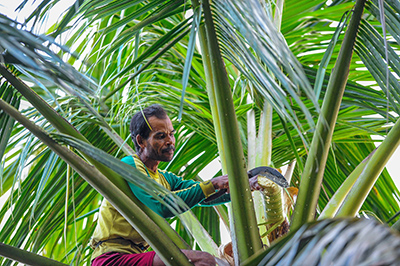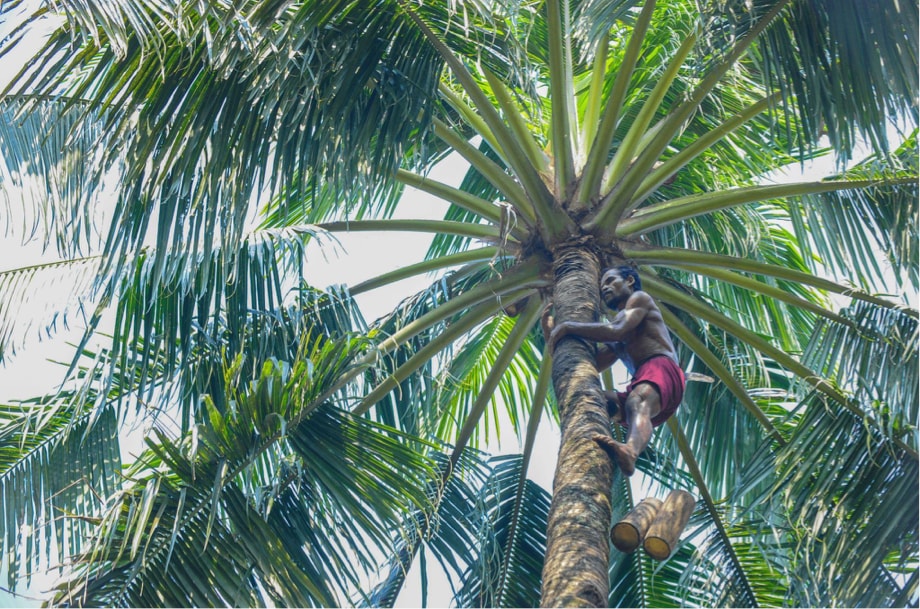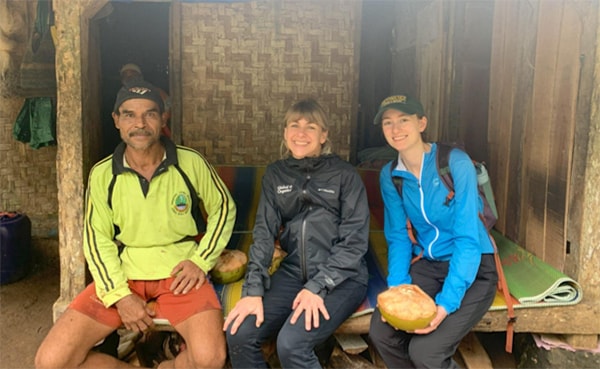The Sweet Symphony of Sustainability: Unveiling the Rich Tapestry of Coconut Sugar in Indonesia
01.25.2024 | Author: Global Organics | Category: Cane Sugar & Sweeteners, Coconut, Organic & Sustainability
In the heart of Indonesia, where the tropical breeze carries whispers of tradition and the fertile lands of Java cradle a sweet secret, there exists a cultural legacy known as coconut sugar. Referred to as “gula kelapa” in the local tongue, this granulated sweetener has a history dating back to the 17th century and has woven itself into the culinary and cultural heritage of the Indonesian people. Join us on a journey as we delve into the intricate tapestry of coconut sugar, exploring its cultivation, the traditions it encompasses, and the sustainability challenges it faces.
The Tale of Cultivation
A Historical Odyssey
Coconut sugar’s journey begins in the sprawling landscapes of Java, Indonesia. Historical records and estimates suggest that the production of this sweet gem started around the 17th century, becoming an integral part of the Indonesian way of life. As generations passed, coconut sugar ingrained itself in the culinary and cultural practices of the Javanese people.
The Dance of Flowers
The coconut palm, Nature’s artisan in this sweet symphony, produces male and female flowers on the same inflorescence, or spadix. This botanical ballet is crucial for the formation of coconuts. Male flowers, residing in the upper section, release pollen onto their female counterparts below, initiating the coconut development process.

Harvesting Liquid Gold
Farmers, equipped with skill and tradition passed down through generations, embark on a challenging task: climbing towering coconut palms to collect the sap, known as neera. Using sickles, they carefully cut off a small portion of the unopened spadix. This process, repeated twice daily, yields about 4 liters of sap per palm. The collected liquid gold is then subjected to a meticulous process of heating and crystallization, resulting in the fine-grained coconut sugar.
Sustainable Practices
The cultivation of coconut palms for sugar production has deep roots in agroforestry—a practice of growing trees together with other agricultural crops and animals. This harmonious approach not only benefits the coconut palms but also positively impacts soil health and climate. The perennial nature of coconut palms, with a useful life of 60-70 years, enhances their carbon sequestration potential, making them valuable contributors to environmental sustainability.
Preserving Tradition and Biodiversity
Cultural Significance
In the diverse tapestry of Indonesian agriculture, coconut sugar holds a special place. The Javanese people use this sweetener extensively in their daily lives, incorporating it into coffee, cakes, confectionery, beverages, soy sauce, herbal medicines, and various meals. The sweet, earthy flavor of coconut sugar is not just a taste; it’s a cultural identity.
Farmer Climbers and Forest Riches
While coconut palms are cultivated across all provinces in Indonesia, Java stands out as the primary producer of inflorescence-derived products like sugar and nectar. The skilled farmer climbers, mastering the art of ascending towering palms, play a pivotal role in this process. Most farm holdings are small, often limited to one hectare or less, nestled in the hilly-forested areas of central Java. Beyond coconut sugar, farmers benefit from the sale of other forest products, including rubber, bamboo, native spices, and coffee.

Agroforestry and Biodiversity
The concept of agroforestry, deeply ingrained in Indonesian agricultural practices for thousands of years, is now gaining global attention. This holistic approach not only supports the growth of coconut palms but also nurtures a rich diversity of plants. Farmers, dependent on this biodiversity, cultivate a myriad of crops, from mangosteen to jackfruit, ginger, bananas, and pineapple. These crops serve both for subsistence and local sale, enhancing the incomes of over 6.3 million people in the country.
Navigating Sustainability Challenges
The Dark Side of the Stove
As we savor the sweetness of coconut sugar, we must confront the challenges it brings. The traditional method of cooking down coconut sap involves wood stoves, leading to the felling of trees. In remote areas with limited infrastructure, electric stoves are not a viable option. Exploring alternatives, like using rice grass for biomass energy, presents its own set of logistical and cost-related challenges.
The Risky Climb
Another challenge lies in the traditional method of tapping coconut flowers. Skilled farmers climb up and down the palms, a risky endeavor even with their expertise. Safety gear like harnesses is challenging to use in this context, and the farmers are often resistant to such changes. Exploring alternatives, such as breeding dwarf coconut palms or mechanized harvesting, faces hurdles in maintaining agroforestry diversity.
Global Organics‘ Commitment to Sustainability

A Call to Action
At Global Organics, we understand the intricacies of sustainability. As a company committed to promoting sustainable practices, we actively collaborate with our suppliers to minimize our environmental impact. While coconut sugar and nectar farming present ecological benefits, we acknowledge the need for continuous evaluation and improvement.
Seeking Solutions
Recognizing the challenges in the production process, we actively engage in conversations within our team to address issues and seek innovative solutions. As a responsible player in the industry, we prioritize asking questions that help us understand where problems lie and how we can contribute to positive change.
Conclusion
In the vast expanse of Indonesia, where biodiversity thrives and cultural traditions echo through the ages, coconut sugar emerges not just as a sweetener but as a symbol of sustainability and resilience. The challenges it faces beckon us to explore creative solutions, ensuring that the sweet story of coconut sugar continues to be written in harmony with nature and tradition. As consumers, our choices can shape this narrative, supporting practices that preserve biodiversity, empower local communities, and contribute to a more sustainable future. Join us in savoring the sweetness of coconut sugar, not just for its taste but for the rich tapestry it weaves across the landscapes of Indonesia.


